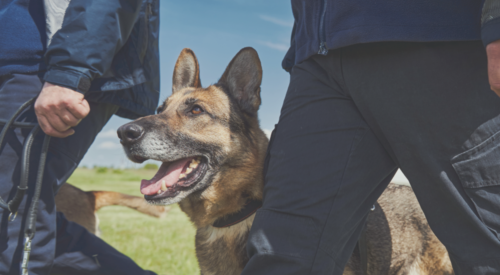With employees often required to travel for work, SMEs face unique challenges in protecting their workforce and ensuring business continuity. GSA have highlighted essential questions to guide organisations in safeguarding their business and employees in a constantly evolving environment.
1. Why is it important for companies, of all sizes, to have a good risk travel management process in place to look after the safety, health and wellbeing of their travellers?
There are two main reasons. The first is a legal one. In many countries, employers have a statutory duty to protect their employees from avoidable harms in the workplace, and this extends to when employees are travelling on business. The second relates to the good business sense of taking good care of your employees so that they appreciate their employer, are loyal, and give more of their discretionary effort to making their organisation a successful one.
2. Why might this be more difficult to manage for SMEs (rather than large companies). What are the specific challenges for SMEs?
There are travel risk management challenges for bigger and smaller organisations, in our experience. Whilst larger organisation may have the benefit of dedicated resources to support their travel programmes, scale can sometimes inhibit good communication and co-ordination between the different departments that may have a role in travel risk management – procurement, HR, insurance, security, occupational health, legal, training – still more so in a group structure dispersed internationally.
In SME companies and organisations, there may be greater flexibility and agility in how they manage their business, but this may mean that some managers have to be ‘multi-hatted’ and carry responsibilities for travel risk outside their normal duties and experience. For example, a HR lead may not have the expertise to undertake a security assessment of a traveller’s destination country or know how to handle a critical incident involving a traveller caught-up in an event abroad. Then there is the need for resilience across time zones and the ability to support multiple travellers to different locations. Providing bespoke briefings to travellers intended to reduce their exposure to identified travel risks may also pose challenges in smaller organisations which lack the resource and expertise to provide such information.
3. Does it have to be expensive?
The good thing about travel risk management is that it doesn’t have to be expensive. The major ‘expense’ is thinking about the reasonably foreseeable risks – health, safety, security – that could affect the business traveller in the location(s) to be visited. Then, identifying the proportionate and practical steps to prevent the identified risks from actually affecting the traveller(s).
The complexity and cost of arrangements should be proportionate to the degree of risk faced. A large multi-national corporate organisation engaged in prospecting for oil and gas in hostile and remote environments will need different resources to address risks as compared to a company where a handful of employees take a weekly train journey between branch offices in different parts of the country. Both organisations need to consider and address travel risks, but their approaches will be very different because the travel risks and required mitigations are so dissimilar.
4. Where would you start if you have nothing in place? ie what are the basics?
The basic steps are the most important ones. Firstly, that travel – whether national or international – is authorised by a manager who has considered the travel-related risks that could arise as well as the business opportunities. Secondly, that the traveller is briefed to understand what the relevant risks are and what the traveller, and the organisation, can do to avoid those risks. Thirdly, that the traveller and their manager remain in touch during travel, and they have some contingencies agreed if contact is lost or something extraordinary arises.
5. What’s best practice?
Best practice starts with the employer understanding that they have a duty of care and then making sure that managers understand their responsibilities to this legal and moral obligation. With roles and responsibilities clear, ensuring that there is effective co-ordination between all the departments and individuals who contribute to the identification and management of travel risk.
Getting the co-operation of the traveller to participate in risk management sounds easy, but how do you establish whether the person is actually fit for the travel that is expected of them? There are sensitive and effective ways of managing confidential information about medical conditions and protected characteristics. What’s most important is for the traveller to know who to contact if something that concerns them happens whilst they are away. Finally, good organisations learn when things happen which weren’t expected but this usually involves the traveller speaking up about unpleasant incidents and near-misses in the expectation that the organisation will do something about them. This goes back to the key issue of engaged leadership, and the sense of accountability for keeping people safe.
6. Do you have any examples of 1. best practice or 2. where risk management has fallen short and the repercussions for the traveller and for the company?
In the past two years, we have seen brilliant examples of travel risk management teams going ‘above and beyond’ – like in the early stages of the war in Ukraine, and during life-threatening floods in Italy and Germany, and even when staff on holiday injured themselves whilst skiing but had no one else to help them to get home.
The 2023 case of Martin Smith v Primetal Technologies (Engineer who had bowel removed after work trip wins £800k claim | Bournemouth Echo) is an example of what can go wrong when travel risk is not managed well. In that case, Mr Smith had been off work during 2018 with Crohn’s disease, so his employer knew about his condition before sending him to India in 2019. Mr Smith had to live in on-site accommodation at the factory where he was working and there was evidence (photos) of wild monkeys coming into his kitchen stealing food etc. It was not a hygienic environment. Mr Smith became ill but because inadequate research had been undertaken about the availability of medical support, Mr Smith was delayed from receiving the care he needed. Eventually, he had to be repatriated to the UK where a section of his intestine had to be removed. The case was registered at the High Court Kings Bench Division in the Bournemouth & Poole District but was settled outside court with Mr Smith accepting a £800,000 settlement.
7. Do you think SMEs are giving travel risk management proper consideration? Is it something they are becoming more aware of and why?
Although larger organisations can have co-ordination challenges in respect of travel risk management, they usually have more mature arrangements than SMEs. This may because SME’s undertake high or medium risk travel less frequently or at lower volumes, and therefore have no one with a core responsibility of asking the question ‘What travel-related risks could arise in this journey that has just been approved?’ Without that key question being asked, then any organisation is at risk of some foreseeable problem arising. The law is quite clear – if the risk could be foreseen then the employer should have foreseen it and acted to prevent it. SMEs are becoming aware of it for various reasons – litigation (like Mr Smith above), staff associations/trade unions raising concerns, health & safety law becoming more widely audited against, social media commentary on travel, and travellers’ own experience of what can go wrong when abroad. Also, many employers are increasingly seeing the value in looking after their people and where such loyalty is often reciprocated.
8. Do you have any other travel risk management advice/top tips for SMEs?
Even if you can get the basics in place, try to find the time to test your arrangements in a simulated exercise of a likely scenario. You will be surprised at how much you learn, how much it brings your team together and how valuable it is to practice before the real thing could happen. We cannot commend this enough as it can make the difference between reputational catastrophe and success. Finally, never underestimate how important it is to work with the families of employees caught-up in incidents or events abroad.



